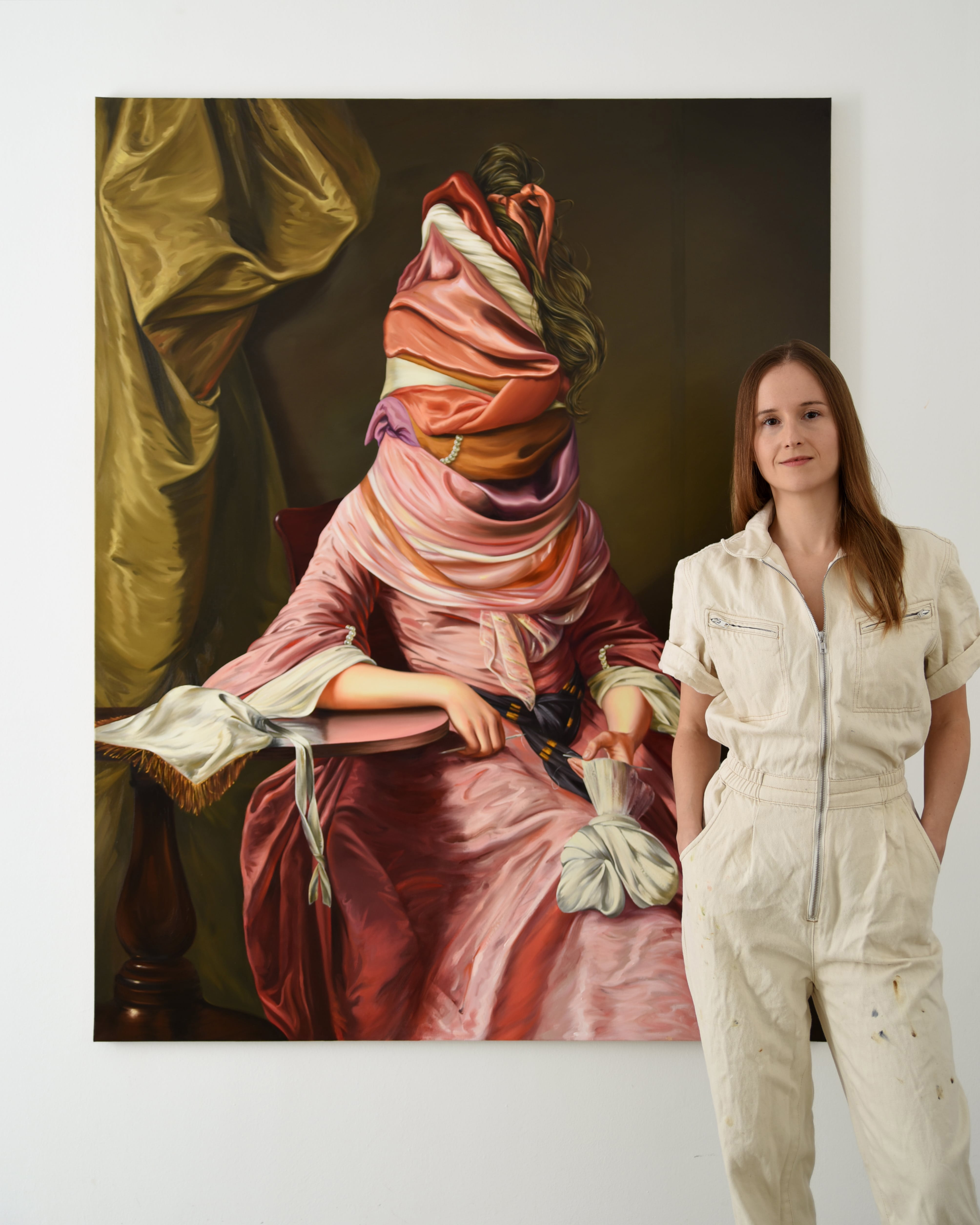

Ewa Juszkiewicz’s work stems from a substantial failure in the history of art: the portrayal of women. Rather than the depiction of a person, portraits of women especially in the Renaissance were a composition of aesthetic and social canons, resulting in figures that were ultimately just anonymous objects of beauty, perfection and deference. The Polish artist aims to dismantle the old paradigms that hid a woman’s personality, claiming and visualizing a new role for them. She replaces their faces with new symbolic features like natural elements, fabrics or locks of hair. Mysterious masks recall ambiguous emotions, thus reversing the classical order of the painting and bringing it to a nonrational level of perception
Make-up and hairstyles are fundamentally costumes of the face: under the aegis of style they embellish, conceal and frame, just as in the original portraits the painted face stood in accord with principles of decorum. Yet in wholly stripping it away, replacing appearance with masses of foliage, cloaking features within folds of fabric or masking expression beneath crustaceans, Juszkiewicz does not hide the figure nor undermine its status, but rather creates alternative, freely imagined and fantastical portrayals of women. Juszkiewicz's act of feminist appropriation importantly offers no possibility of atonement; the injustices of history can now not be undone. What is born instead is a new story; a future history for the paintings' anonymous and more often than not nameless protagonists.
More recently Juszkiewicz's interest in the historically destitute image has expanded too reworking images of artworks that have been lost, destroyed or irrevocably damaged. Rejecting the possibility that these artworks are irretrievably gone, relying on the mimetic possibility of poor-quality reproductions in books or the fragments of anecdotal recollections, Juszkiewicz uses the act of painting to engender a point of return for these languishing memories. In her reinterpretative paintings it may be but an aura of the past that is rejuvenated, but a memory is rekindled, an image endures.